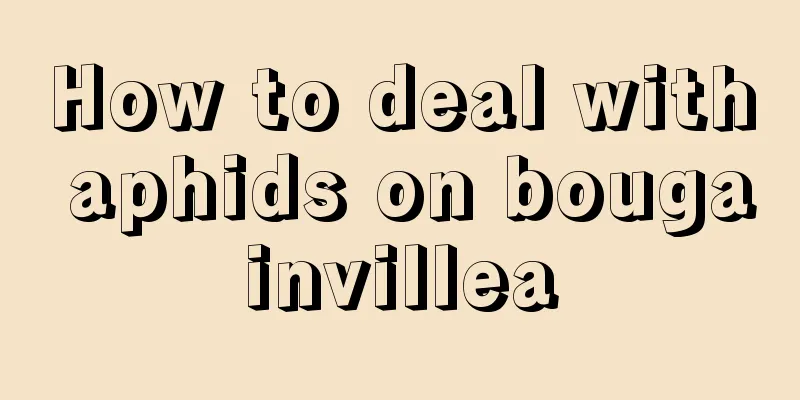Cultivation methods and precautions for sweet potato bonsai

1. Maintenance methods1. Flower pot: When cultivating sweet potato bonsai, you can choose to cultivate it in a flower pot or a vase. However, because sweet potatoes are large in size, you should choose a flower pot with a larger mouth. When cultivating the sweet potatoes in a vase, you should choose a vase with a mouth of 15-20cm, otherwise it will not be able to fix the sweet potatoes well. 2. Temperature: In a low temperature environment, the growth rate of sweet potatoes will be very slow. Therefore, during cultivation, the temperature around it should be kept above 20℃. 3. Water: Sweet potato bonsai can be grown in water or in soil. Under water culture conditions, water is usually added to two-thirds of the sweet potato, and the water is changed every two days. When growing in soil, just keep the soil moist. 4. Soil: Sweet potato bonsai does not have high requirements for soil, normal soil is enough. But the soil should be loosened regularly to ensure its air permeability. The most suitable soil combination is a mixture of leaf mold, garden soil and river sand. 2. Breeding techniques1. Pruning: Sweet potato bonsai has a good ornamental effect, so during its growth process, the denser branches and leaves need to be pruned to give other branches sufficient growth space so that they can achieve a better ornamental effect. 2. Repotting: When the branches and leaves grow in the early stage, in order to make the sweet potato potted plants look more lush in the later stage, you can choose to replace the pot with a pot mouth of more than 30cm, and the higher the better. 3. Problem diagnosis and treatment1. Yellow leaves: You can choose to cut off the diseased branches to let them grow again, and add a few drops of nutrient solution to avoid similar situations from happening again. 2. Root rot: If root rot occurs when growing sweet potatoes in potted plants, it may be because too much water was added during the cultivation process, causing the roots to rot. At this time, just cut off the rotten part and reduce the amount of water. If large areas of rot occur, replanting is recommended. IV. Other issues1. Can it be eaten: Sweet potatoes can be eaten. Its bonsai is a plant that can be both viewed and eaten. After it grows tender leaves, the tender leaves can be eaten, and its soil-grown tubers can be eaten after being placed in a dry place and the skin becomes completely hard. 2. Can it be grown hydroponically: It can be grown hydroponically. When growing hydroponically, be sure not to let the water completely cover the sweet potatoes, so as to avoid causing them to rot and die. During maintenance, you should change the water frequently, and when breeding, you can consider adding a few drops of nutrient solution according to the growth. |
<<: Cultivation methods and precautions of red pear
>>: Cultivation methods and precautions of red leaf sedum
Recommend
How to divide Thousand Buddha Hands
Thousand Buddha Hands Division Time Thousand Budd...
What to do if the leaves of Tiger Pilan are dry
Caused by direct sunlight - avoid strong light It...
The efficacy and function of coix seed
1. Medicinal Job's tears have the effects of ...
How to cultivate yew
1. Lighting Yew seedlings within three years pref...
Prevention and control methods of Ficus microcarpa
Symptoms and causes of Ficus microcarpa rot When ...
What to do if the tips of Jianlan leaves turn yellow
1. Reduce light Reason: Jianlan cannot be exposed...
How to propagate Gloriosa
Gloriosa radiata cuttings Before the Gloriosa ger...
How many years does a lemon tree bear fruit?
Introduction to Growing Lemon Trees Lemon trees p...
Cultivation methods and precautions of palm pearls
1. Soil Loose, water-permeable, breathable sandy ...
What is the best fertilizer for potted lemons?
Fertilizing time for potted lemon Potted lemons n...
Can the copper coin grass be placed in the bedroom?
1. Is it possible? It can be kept in the bedroom ...
Common pests of King Protea and their control methods
Common pests of King Protea: scale insects Pest s...
Environmental conditions and characteristics of kelp growth
Environmental conditions and requirements for kel...
Do white palms need to be watered every day?
Do you water the white palm every day? Generally,...
Can peonies be planted in northern courtyards (how to manage peonies in northern courtyards over the winter)
Peonies can be planted in the north of China . Pe...









